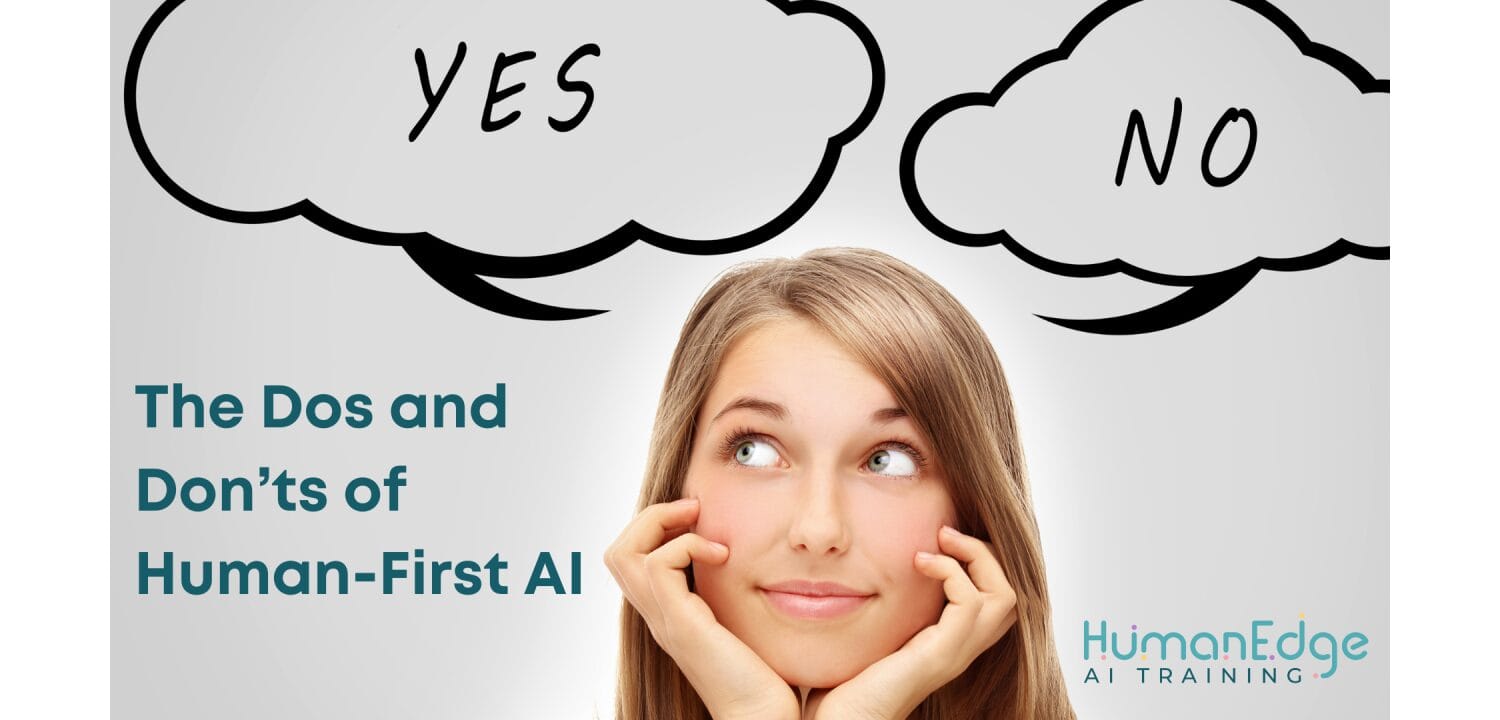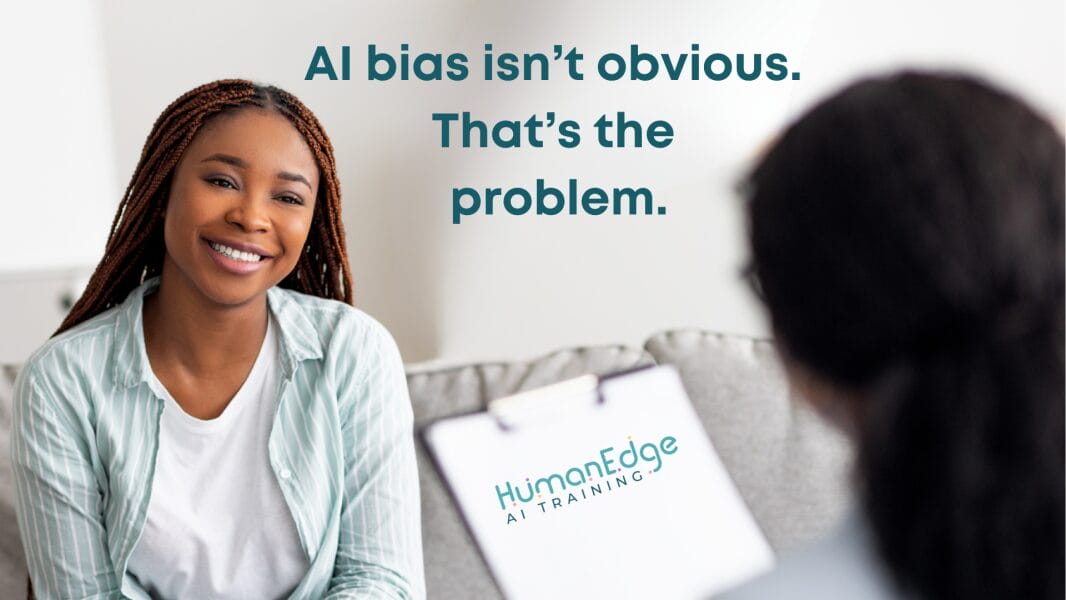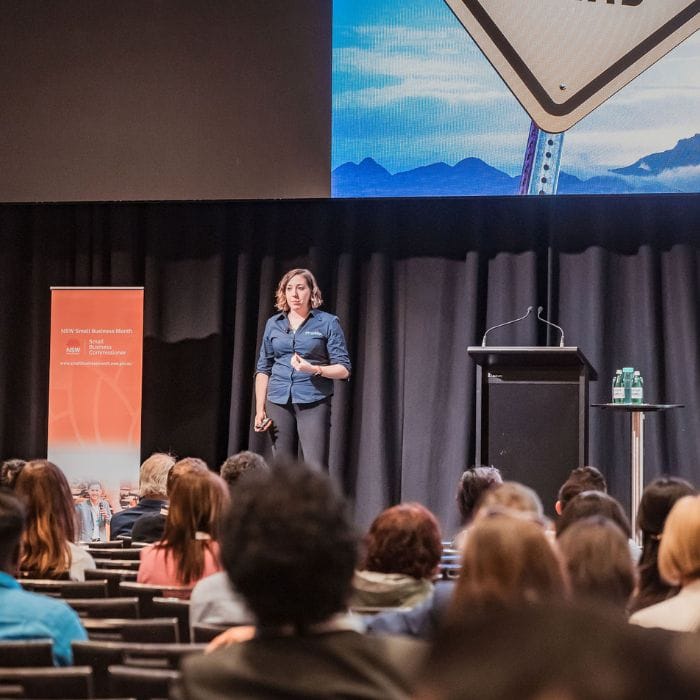Is AI making us more efficient – or more replaceable?
Are human smarts a key part of the equation – or a neglected afterthought?
And are we seeing and using AI as a tool – or leaning on it as a crutch when feeling overworked or uninspired?
Despite what the sci-fi movies, media headlines, and overexcited AI enthusiasts suggest, AI isn’t here to take over. But it is shaking things up. The habits we form and strategies we establish today will shape how AI fits into our future. That’s why taking a Human-First AI approach is critical. AI should support our expertise, not replace the critical thinking, creativity, and ethical decision-making that make us human.
So, how do we strike the right balance between the AI tools and the human brains? Let’s break down the dos and don’ts of Human-First AI.
The Dos of Human-First AI
Use AI as your sidekick, not your human substitute
Yes, AI is an incredible tool – but it’s not running the show. That’s your job. It can speed up research, summarise information, and even spark creative ideas, but it lacks real-world experience, emotional intelligence, and gut instinct that only humans can bring to the table. The humans need to be there to add depth to the output.
AI is great at handling the heavy lifting, but it needs your guidance to produce something truly valuable. It can help you push through procrastination or uncertainty, but you need to trust your own judgement as a human expert and critique the output every time.
Use AI responsibly and ethically
AI doesn’t have a moral compass…but you do. Every AI-generated decision, recommendation, or piece of content has real-world consequences, so it’s up to you to ensure it’s being used fairly, ethically, and with integrity. Are the outputs reinforcing bias? Is AI being used to manipulate rather than inform? Are people aware when they’re interacting with AI rather than a human?
Transparency and authenticity is key. People deserve to know when AI is involved, especially in areas like sales, hiring, or decision-making. AI should empower, not deceive, and the way you use it should reflect your values. This is one of the reasons why I haven’t created a digital avatar of myself.
Get comfortable experimenting with AI (but stay in control!)
The best AI users aren’t the ones who blindly accept whatever it spits out. They’re the ones who test, tweak, and push it further. I encourage you to try different prompts. Compare AI-generated ideas to human ones. Challenge its answers. And discuss your challenges and discoveries with your team.
Always remember that you’re the boss. Stay curious, but also stay in charge. If AI starts making all the decisions, you’re not using it effectively – you’re just outsourcing your thinking.
The Don’ts of Human-First AI
Don’t blindly trust AI – fact-check everything
Your AI tool might sound confident like a fresh-faced university graduate, but that doesn’t mean it’s always right. It can fabricate facts, reinforce biases, and serve up misinformation with complete conviction (I see you, hallucinating chatbots!). If you wouldn’t take advice from a random stranger on the internet without verifying it, why would you trust AI without double-checking what it says?
Always fact-check AI-generated content, cross-check sources, and apply human judgment before taking AI’s output as truth. If it looks too good (or too convenient) to be true, it probably is.
Don’t automate everything – keep humans in the loop
Yes, AI can streamline tasks, but handing over every decision to a machine is a one-way ticket to losing trust. AI may be fast, but it lacks the nuance, empathy, and critical thinking that humans bring to complex situations.
And please, don’t fire all your employees just because AI makes things seem easier. People are still needed to step in when things go sideways – because let’s be real, they will at some point. Especially while AI tools are in their infancy. AI doesn’t carry responsibility, but humans do. If a decision affects real people, a human needs the final say.
Don’t get lazy – AI is a tool, not a shortcut for thinking
AI can generate ideas, but it can’t replace original thought, creativity, or strategic decision-making. If you let AI do all the work without reviewing, refining, and adding your expertise, you’re not leveragingAI – you’re simply outsourcing your intelligence.
Remember the phrase ‘Use it or lose it’? If we stop stimulating our brains and rely on AI for everything, we could turn our minds into mashed potatoes (and not the good kind). AI should push your thinking further – not replace the effort altogether.
For example, I used AI to help draft this article, but it’s my critical thinking, edits, and experience that shaped it.
Bringing AI and human intelligence together
While AI is changing the game, we need to ensure we’re playing it right. Will we let it take over decision-making and creativity – or will we use it as a tool to amplify our expertise? The answer lies in a Human-First AI approach – one where AI enhances productivity, sparks ideas, and streamlines tasks, but never replaces human judgement, ethics, or originality.
I’m here to say it IS possible to make the most of this powerful technology without losing what makes us unique. But the best results happen when humans lead the way.
So, how does Human-First AI apply to your team or company? Let’s chat!
Contact us here or message Leanne on her LinkedIn to discuss training.




